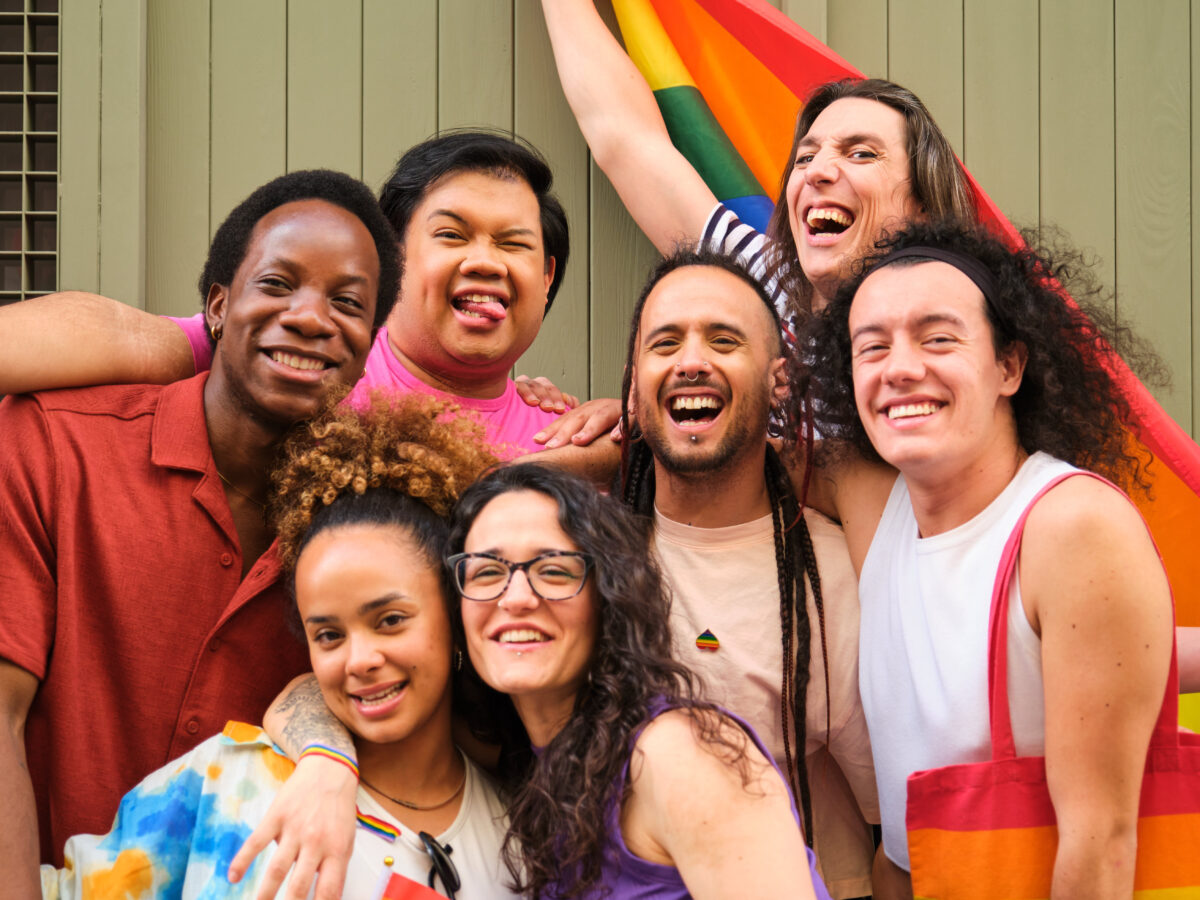In recent years, societal attitudes towards LGBTQ+ individuals have evolved significantly, yet the lingering effects of discrimination and prejudice persist in subtler forms. One such manifestation is internalized homophobia, a complex and often silent struggle within individuals who identify as lesbian, gay, bisexual, transgender, or queer. This phenomenon reflects the internalization of society's negative perceptions and stereotypes about LGBTQ+ individuals, which can profoundly impact self-esteem, mental health, and overall well-being.
Defining Internalized Homophobia
Internalized homophobia can be understood as the involuntary adoption of societal attitudes that denigrate LGBTQ+ identities. This process begins with exposure to societal biases against non-heterosexual orientations, which may be internalized during childhood or adolescence. As individuals grow, they may incorporate these biases into their self-concept, resulting in feelings of shame, guilt, or self-hatred related to their sexual orientation or gender identity.
Causes and Contributing Factors
Socialization and Cultural Norms: From a young age, individuals are immersed in social environments where heterosexuality is often presented as the norm. Messages from family, peers, religious institutions, and media reinforce the idea that being heterosexual is expected and accepted, while deviation from this norm—such as identifying as LGBTQ+—is often stigmatized or marginalized. This cultural backdrop can lead LGBTQ+ individuals to internalize negative beliefs about their identities, viewing themselves through the lens of societal prejudices.
Religious or Family Beliefs: Religious teachings and family beliefs can significantly influence an individual's attitudes towards their own sexual orientation or gender identity. Many religious doctrines and family traditions espouse heteronormative values and may explicitly condemn homosexuality or gender nonconformity. For LGBTQ+ individuals raised in such environments, reconciling their authentic selves with teachings that label their identity as sinful or aberrant can create profound internal conflict and guilt. This conflict often results in the internalization of shame and self-judgment, contributing to the development of internalized homophobia.
Representation: Media plays a powerful role in shaping societal attitudes and perceptions. Historically, LGBTQ+ individuals have been portrayed in media through negative stereotypes or as objects of ridicule. Even in more recent times, while there has been progress in LGBTQ+ representation, negative portrayals and stereotypes persist. Exposure to such representations can reinforce internalized homophobia by validating societal biases and perpetuating feelings of shame or inadequacy in LGBTQ+ individuals.
Fear of Rejection: Fear of rejection—whether from family members, friends, colleagues, or society at large—is a significant driver of internalized homophobia. LGBTQ+ individuals may fear losing relationships, facing discrimination, or experiencing social ostracism if their sexual orientation or gender identity is disclosed. This fear can lead individuals to suppress their true selves, hide their identity, or even engage in behaviors that deny or downplay their LGBTQ+ identity. The need for social acceptance and belonging compels many individuals to conform to societal expectations, despite the toll it takes on their mental and emotional well-being.
Lack of Role Models and Support Systems: A lack of visible role models and supportive networks can exacerbate feelings of isolation and alienation among LGBTQ+ individuals. Without positive representations of LGBTQ+ identities in their immediate environment—whether in their community, workplace, or family—individuals may struggle to develop a strong sense of identity and self-acceptance. The absence of supportive networks and role models who affirm and validate LGBTQ+ experiences can perpetuate feelings of shame and inadequacy, reinforcing internalized homophobia.
Historical and Legal Context: The historical and legal context in which LGBTQ+ individuals live also influences the development of internalized homophobia. In societies where LGBTQ+ rights are limited, where discriminatory laws exist, or where violence against LGBTQ+ individuals is prevalent, the fear of persecution and the need to protect oneself may intensify internalized feelings of shame and self-blame. Legal and societal barriers to equality can reinforce the notion that LGBTQ+ identities are inherently inferior or undeserving of respect, further entrenching internalized homophobia.
Impact on Mental Health
Low Self-Esteem and Self-Worth: Internalized homophobia often leads to negative perceptions of one's own identity, resulting in low self-esteem and diminished self-worth. LGBTQ+ individuals may internalize societal prejudices and stereotypes, viewing their sexual orientation or gender identity as inherently flawed or inferior. This negative self-concept can erode confidence, hinder personal growth, and undermine their ability to assert themselves in various aspects of life.
Anxiety and Depression: Internalized homophobia is strongly associated with higher rates of anxiety and depression among LGBTQ+ individuals. The constant stress of hiding one's identity, fear of rejection or discrimination, and the internal conflict between self-acceptance and societal expectations can contribute to chronic stress and emotional turmoil. Feelings of shame, guilt, and loneliness further exacerbate these mental health challenges, leading to persistent anxiety disorders and depressive symptoms.
Substance Abuse and Risky Behaviors: Some individuals coping with internalized homophobia may turn to substance abuse as a way to numb emotional pain or escape from distressing thoughts and feelings. Alcohol and drug use disorders are more prevalent among LGBTQ+ individuals compared to the general population, often serving as maladaptive coping mechanisms. Additionally, internalized homophobia may increase the likelihood of engaging in risky sexual behaviors or self-destructive actions, further compromising physical and mental health.
Social Isolation and Alienation: Fear of rejection and discrimination can isolate LGBTQ+ individuals from supportive social networks, leading to feelings of loneliness and alienation. Internalized homophobia may compel individuals to distance themselves from LGBTQ+ communities or conceal their identity to avoid stigma or judgment. This isolation can perpetuate feelings of despair and hopelessness, exacerbating mental health issues and preventing individuals from seeking essential support and resources.
Impact on Relationships: Internalized homophobia can strain interpersonal relationships, including familial, romantic, and platonic connections. Individuals may struggle to form authentic connections or maintain healthy relationships due to feelings of shame or inadequacy related to their LGBTQ+ identity. The fear of rejection or betrayal may prevent individuals from fully disclosing their sexual orientation or gender identity to loved ones, creating barriers to intimacy and mutual understanding.
Suicidal Ideation and Self-Harm: The cumulative effect of internalized homophobia, compounded by social stigma and discrimination, increases the risk of suicidal ideation and self-harm among LGBTQ+ individuals. Studies consistently show elevated rates of suicide attempts and completed suicides within the LGBTQ+ community, particularly among young people who face profound challenges in reconciling their identity with societal expectations. Internalized shame and feelings of hopelessness can contribute to a sense of despair, prompting individuals to contemplate or act on thoughts of ending their lives.
Addressing Internalized Homophobia
Addressing internalized homophobia is a crucial step towards promoting mental health and well-being among LGBTQ+ individuals. It requires a comprehensive approach that encompasses individual, interpersonal, and societal levels of intervention. By fostering self-awareness, building supportive communities, and advocating for systemic change, we can create environments where individuals feel empowered to embrace their identities without shame or fear.

Strategies for Addressing Internalized Homophobia
Self-Awareness and Acceptance: Self-awareness is the foundation for addressing internalized homophobia. LGBTQ+ individuals may benefit from introspection, therapy, and self-affirmation exercises to explore and affirm their sexual orientation or gender identity. Recognizing and challenging internalized negative beliefs—such as feelings of shame or self-blame—is essential for fostering self-acceptance and building resilience against societal prejudices.
Education and Exposure: Increasing exposure to positive representations of LGBTQ+ identities in media, literature, and educational curricula can challenge stereotypes and promote understanding. Educational initiatives that highlight the diversity and richness of LGBTQ+ experiences help combat ignorance and promote empathy. By normalizing diverse sexual orientations and gender identities, individuals are more likely to develop affirming attitudes towards themselves and others.
Community Support: Building and participating in LGBTQ+ communities and support networks provides crucial validation, acceptance, and a sense of belonging. Community support groups, social organizations, and online forums offer safe spaces where individuals can share experiences, seek guidance, and receive emotional support. Connecting with peers who share similar experiences fosters solidarity and resilience, reducing feelings of isolation and alienation.
Therapy and Counseling: Professional therapy and counseling play a vital role in addressing internalized homophobia by providing individuals with a confidential space to explore their feelings and experiences. LGBTQ+-affirmative therapists are trained to address the unique challenges faced by LGBTQ+ individuals, including internalized shame, identity exploration, and coping with discrimination. Cognitive-behavioral therapy (CBT), acceptance and commitment therapy (ACT), and other therapeutic approaches can help individuals challenge negative thought patterns, build self-esteem, and develop healthier coping strategies.
Advocacy and Social Change: Advocating for LGBTQ+ rights, social justice, and inclusive policies is essential for creating societal change and reducing the prevalence of internalized homophobia. Advocacy efforts may include supporting anti-discrimination laws, promoting LGBTQ+-inclusive healthcare practices, and challenging discriminatory practices in education, employment, and housing. By advocating for systemic change, individuals and organizations contribute to creating environments where LGBTQ+ individuals feel respected, valued, and affirmed.
Intersectional Approaches: Recognizing the intersectionality of identities—such as race, ethnicity, socioeconomic status, and disability status—is critical in addressing internalized homophobia. LGBTQ+ individuals who belong to marginalized communities may face compounded discrimination and stigma, exacerbating internalized shame and isolation. Intersectional approaches to addressing internalized homophobia involve acknowledging and addressing multiple layers of oppression and privilege, ensuring inclusive support and advocacy for all LGBTQ+ individuals.
Role Modeling and Visibility: Visible role models and leaders within the LGBTQ+ community play a crucial role in combating internalized homophobia. Positive representation of LGBTQ+ individuals in leadership roles, media, and public spheres can inspire pride and resilience among individuals who may be struggling with their identity. Celebrating diverse LGBTQ+ narratives and achievements contributes to building a culture of acceptance and affirmation within society.
Conclusion
In conclusion, addressing internalized homophobia is essential for promoting the mental health and well-being of LGBTQ+ individuals. This pervasive phenomenon, rooted in societal prejudice and stigma, can have profound and detrimental effects on self-esteem, relationships, and overall quality of life. By understanding the causes and impacts of internalized homophobia, we can develop effective strategies to support individuals in their journey towards self-acceptance and empowerment.
At the individual level, fostering self-awareness and acceptance is crucial. LGBTQ+ individuals benefit from exploring their identities, challenging internalized negative beliefs, and seeking professional support through therapy or counseling. Education and exposure to positive representations of LGBTQ+ identities in media and society play a pivotal role in combating stereotypes and promoting empathy.
Building and participating in LGBTQ+ communities and support networks provide validation, acceptance, and a sense of belonging. These safe spaces allow individuals to share experiences, seek guidance, and receive emotional support, reducing feelings of isolation and alienation.
Advocacy for LGBTQ+ rights and social justice is integral to creating inclusive environments. By advocating for inclusive policies, challenging discrimination, and promoting affirmative practices in healthcare, education, and employment, we contribute to societal change that fosters respect, dignity, and equality for all.
Ultimately, addressing internalized homophobia requires a holistic approach that acknowledges the intersectionality of identities and promotes the visibility of diverse LGBTQ+ narratives and achievements. By celebrating diversity, challenging stigma, and embracing authenticity, we can create a future where LGBTQ+ individuals can live openly and authentically, free from the burden of internalized shame and prejudice. Together, through empathy, education, and collective action, we can build a more inclusive and affirming society for everyone, regardless of sexual orientation or gender identity.
Related Articles:
Dealing with Rejection: Building Resilience in the LGBTQ Community
The Importance of LGBTQ Affirmative Therapy
Supporting Your LGBTQ Child: A Parent’s Guide
Addressing Substance Abuse in the LGBTQ Community
Coping with Discrimination: Strategies for LGBTQ+ Individuals



